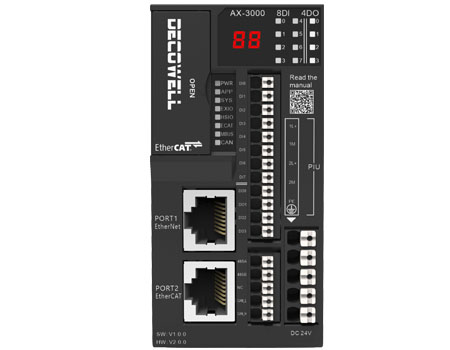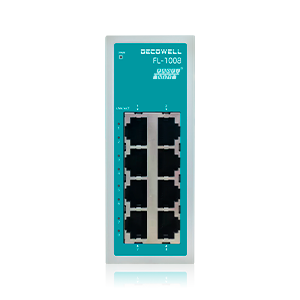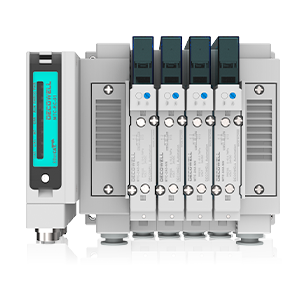
Lithium industry
Decowell RB series ultra-thin card-type I/O is used in visual inspection equipment
01 Industry Analysis
As a key technology of intelligent detection equipment, machine vision is an important application direction in the field of artificial intelligence. It can help the
manufacturing industry to measure, locate, identify, and detect defects. It can not only overcome the inconsistency, non-repeatability, and subjectivity of human
eye detection standards but also surpass the limits of human eyes in terms of high speed, high spectrum, high resolution, high reliability, industrial sustainability, and environmental adaptability.
Driven by artificial intelligence technologies such as large models, it accelerates the development of intelligence.
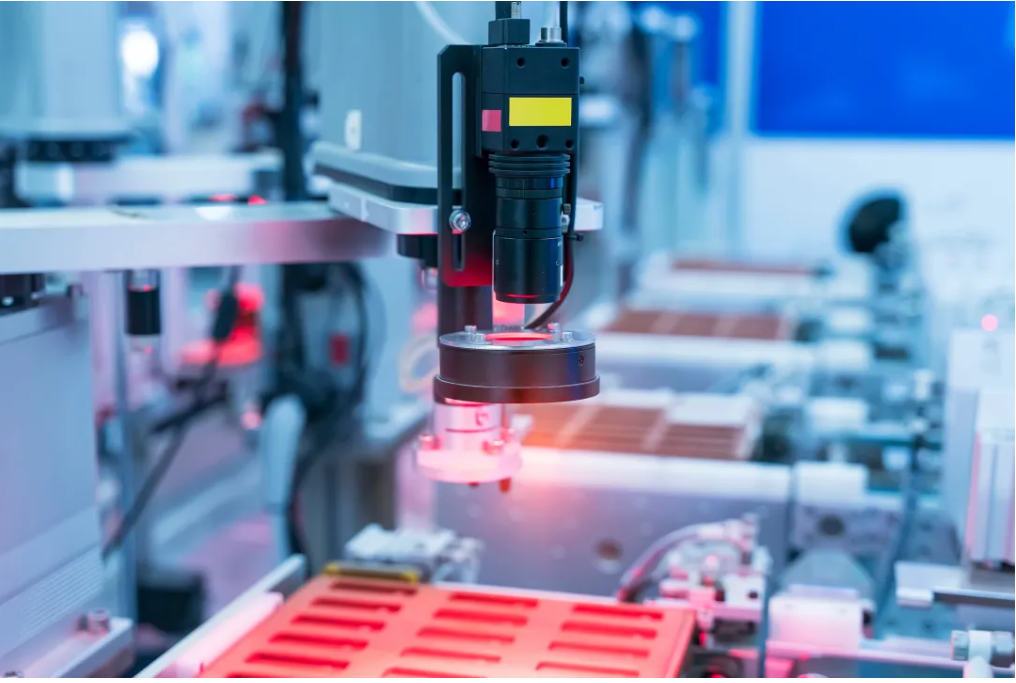
At present, machine vision detection equipment is widely used in lithium battery, photovoltaic, electronics, medical, textile, food, and other industries. Supported
by large-scale detection scenarios, the machine vision detection equipment industry has taken shape and the technology maturity is constantly improving.
02 Process Description
In the lithium battery industry, the power battery cover detection equipment mainly uses conveyor belts and manipulators to convey the battery cover to different
stations for taking pictures and transmitting the photo information to the visual system and the visual system is used to judge whether the various parameters
of the battery cover meets the requirements.
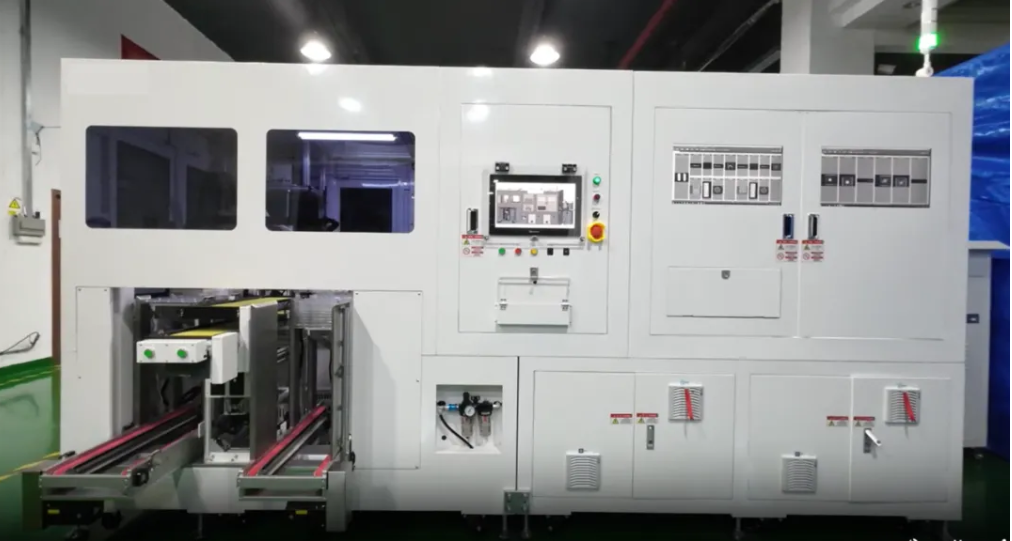
The visual system can detect bumps, scratches, dirt/discoloration of poles, wrinkles, foreign matter, bubbles of pole film, lack of glue, cracks, dislocation of lower
plastic, offset, missing, damage, scratches of explosion-proof film, reverse installation, depression, protrusion, scratches, dirt/black spots, multiple openings,
deformation of explosion-proof disks, pits, protrusions, scratches, burrs, deformation of injection holes, discoloration, fingerprints, pits, scratches in non-welding
areas of cover plates, discoloration, scratches, pits/concave spots/collapses/lack of material, foreign matter, protrusions in welding areas of cover plates, barcodes
in engraved areas of cover, plates require scanners to be able to scan, and poor size detection.
03 Decowell Solution
Among visual inspection equipment, the Decowell RB series ultra-thin card-type I/O is trusted by customers for its excellent technical parameters and excellent
product quality.
RB series digital output modules are suitable for voltage loads, reducing external pull-up resistors, thereby simplifying the wiring of the electrical cabinet and
ensuring the stability and high performance of the equipment. At the same time, the RB series products have obvious cost advantages, shorten the delivery cycle,
can replace ET200SP, and have won unanimous praise from customers.
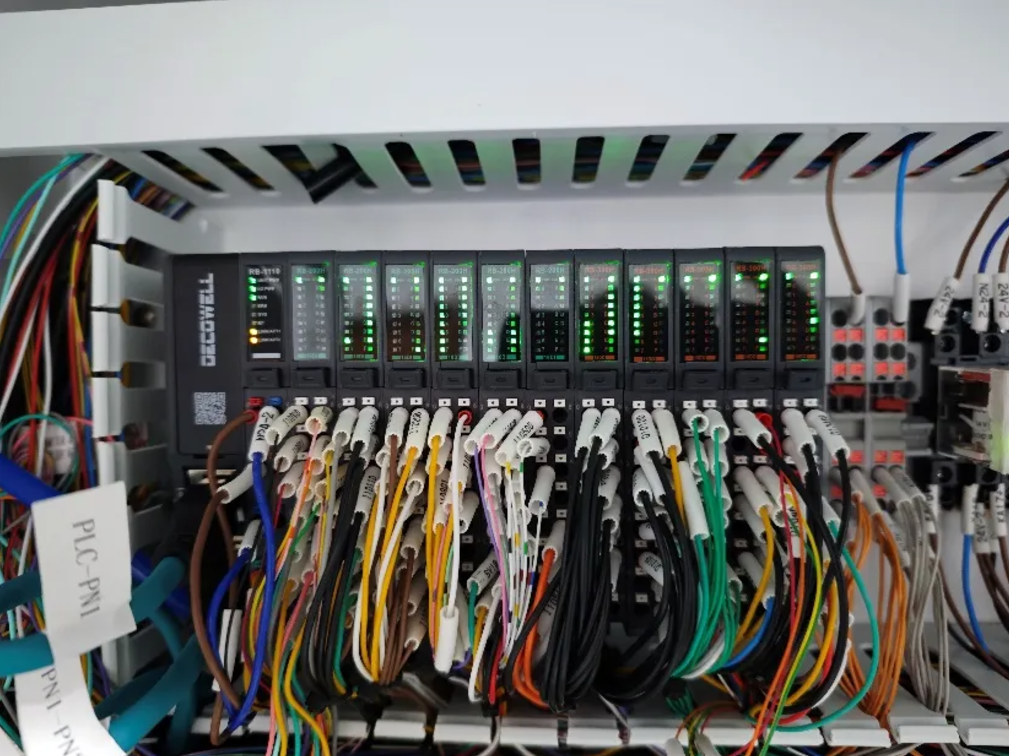
Master station: Siemens 1500;
Applicable process section: photovoltaic/lithium battery production line visual inspection equipment;
Project I/O configuration: This model uses 3 RB slave stations, and a single digital quantity has 366 points.
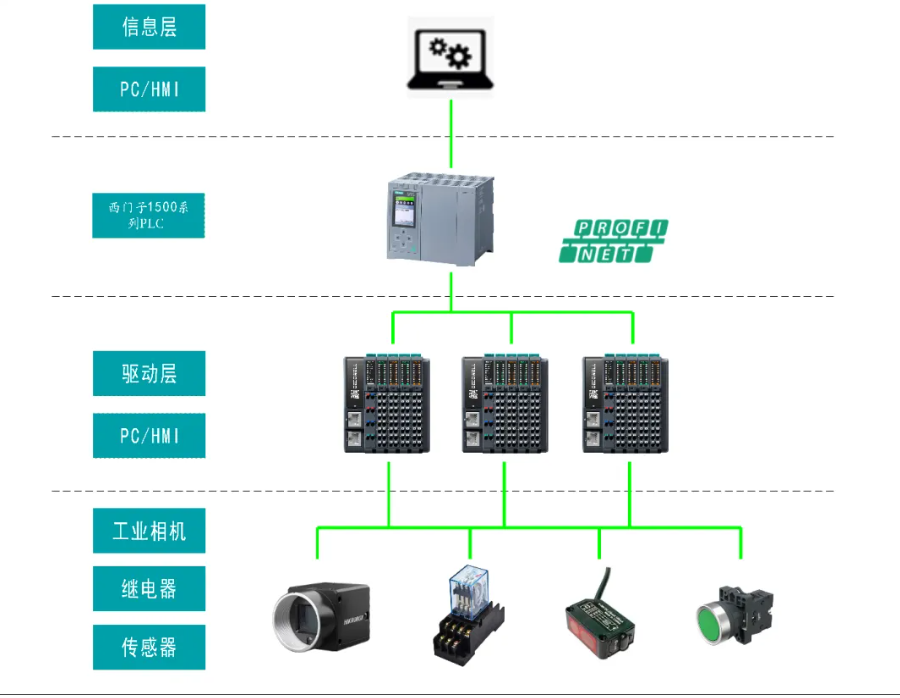
Project Overview: This project is a visual inspection project. The operation process realizes fully automated defect detection and processing. The signal point
the type used is digital input and output, which mainly undertakes the rapid response of industrial cameras, relays, sensors, and other loads.
Among them, the industrial camera is a voltage load, which only requires a certain voltage (weak power signal) to drive it to open. The workpiece arrival signal and the camera start signal
need to be closely coordinated. The 12 industrial cameras of the whole machine need to complete defect detection within a 1.6-second beat, which poses great challenges to the signal
processing rate and stability.
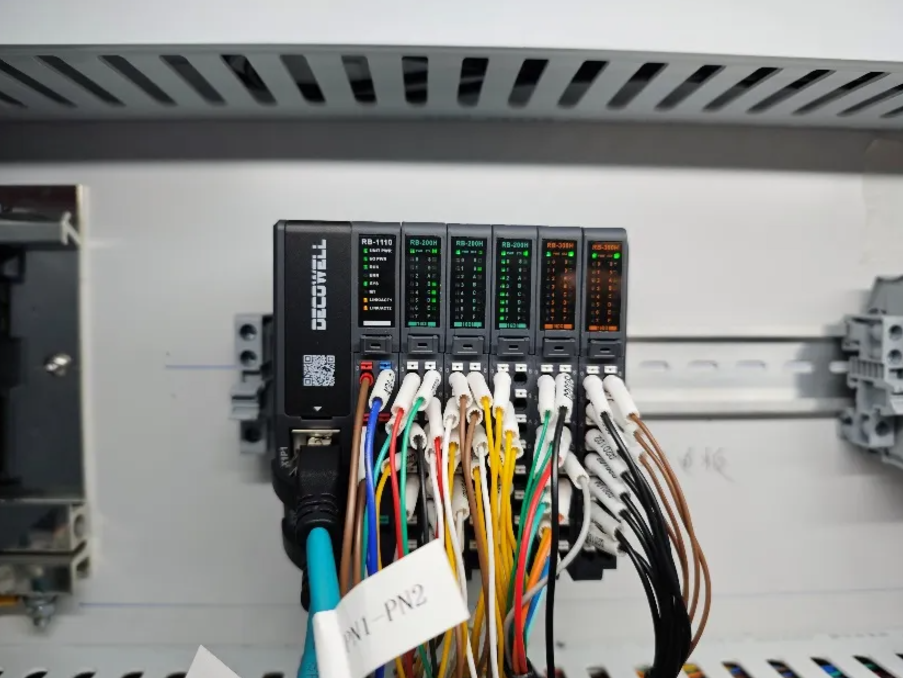
04 Decowell digital output module wiring introduction
1. The wiring of Decowell RB-300H and intermediate relay is as shown below:

2. The wiring of Decowell RB-300H and industrial array camera is as shown below:

The above two figures respectively show the wiring method of RB-300H and current load and voltage load.
In the industrial field, most of the loads are current loads (such as coil-driven relays, solenoid valves, and electromagnets). For current loads, the output point
of RB-300H can start and close the load normally.
There are still a few voltage-type loads in industrial sites. This type of load is voltage-driven and only requires a certain voltage (weak power signal) to drive
it open. If the output end of RB-300H is directly connected to the signal end of the voltage-type load in the off state, the voltage obtained at the output end
of RB-300H is the voltage divided by the load control port and the module when it is turned off due to the large internal resistance of the voltage-type load.
The voltage divided may have reached the trigger voltage of the voltage-type load. Therefore, when RB-300H is connected to the signal, it cannot trigger the
rising edge start requirement of the voltage-type load, and it may not be able to control the voltage-type load normally.
Therefore, for the output point of the voltage-type load RB-300H, a pull-up resistor is required. The resistance value ranges from 1K to 10K. Generally, you can
refer to the manual instructions for the voltage-type load.
05 RB series ultra-thin card-type I/O
RB series card-type I/O modules are distributed expansion modules developed by DECOWELL. This series of modules consists of adapters, I/O modules, power
modules, and terminal modules.
The adapter can support multiple communication buses, such as PROFINET, EtherCAT, CC-Link, Modbus TCP, etc. I/O modules can be divided into digital input
modules, digital output modules, analog input modules, analog output modules, and functional modules, and users can match them according to actual
applications. Digital input modules and digital output modules are commonly used I/O modules in the RB series.

Product features:
1. Support large-diameter terminals, no tool wiring required;
2. The communication interface is designed as a 45-degree oblique interface to reduce stress;
3. Multiple protections such as overcurrent and reverse connection;
4. Hot-swap function, online maintenance without shutdown;
5. Powerful diagnostic function, support module-level and channel-level diagnosis;
6. DIN35 rail-mounted spring dial, one-step installation;
